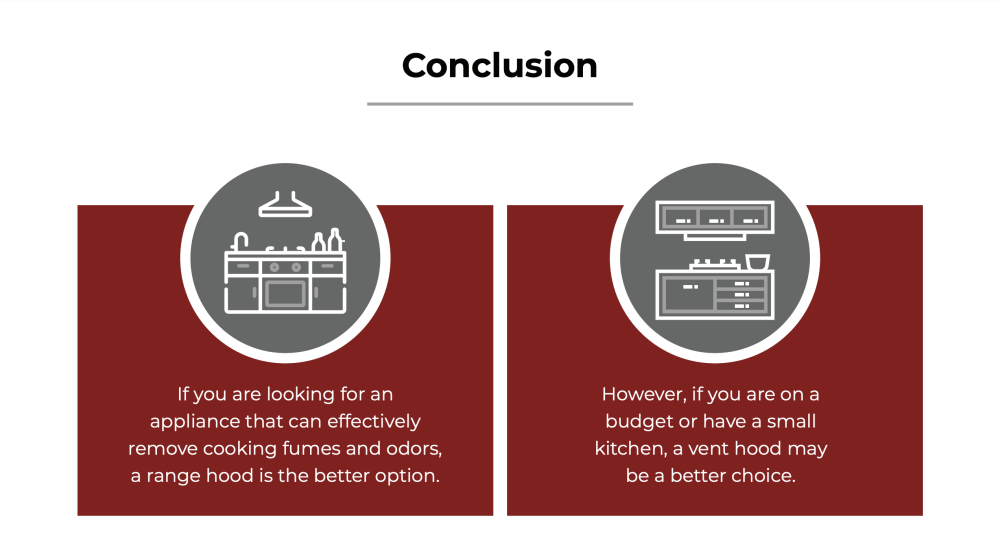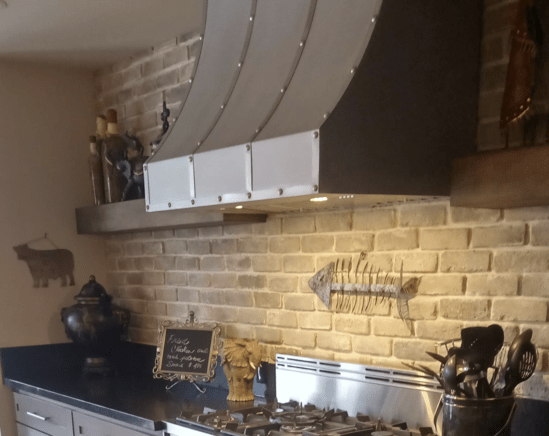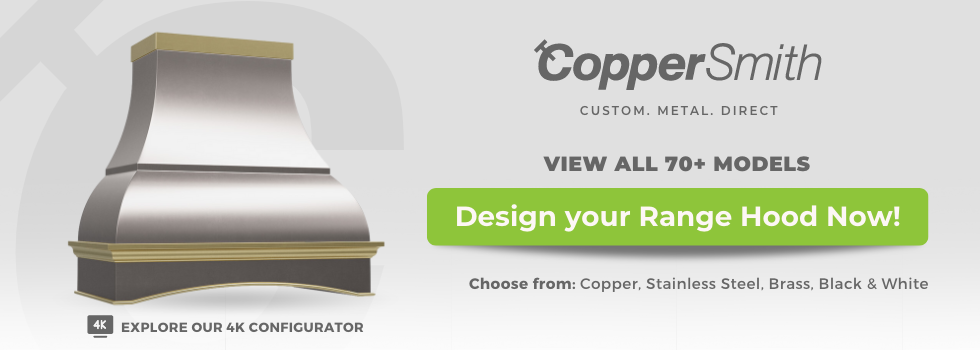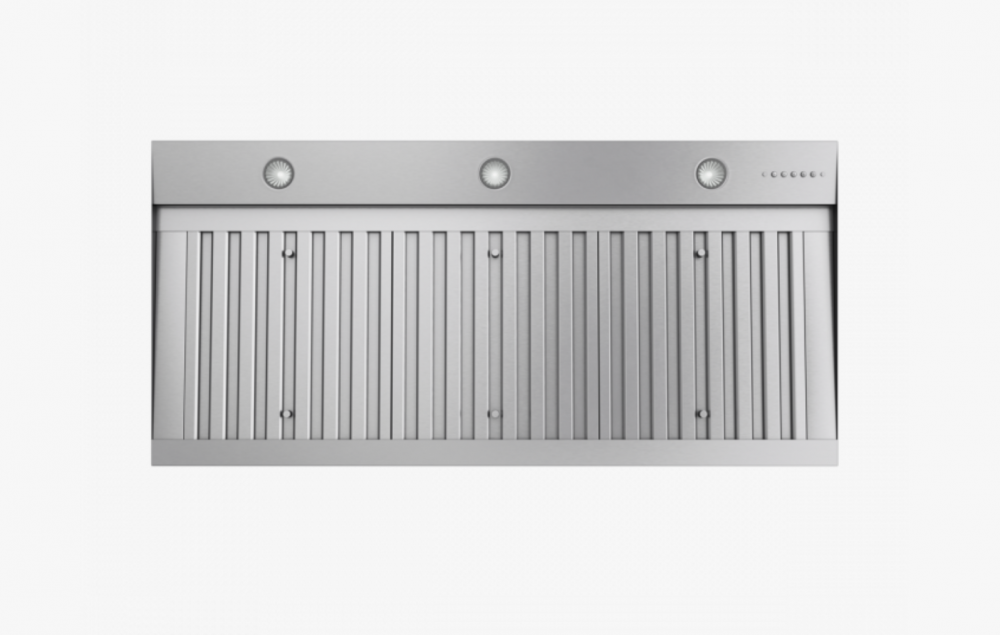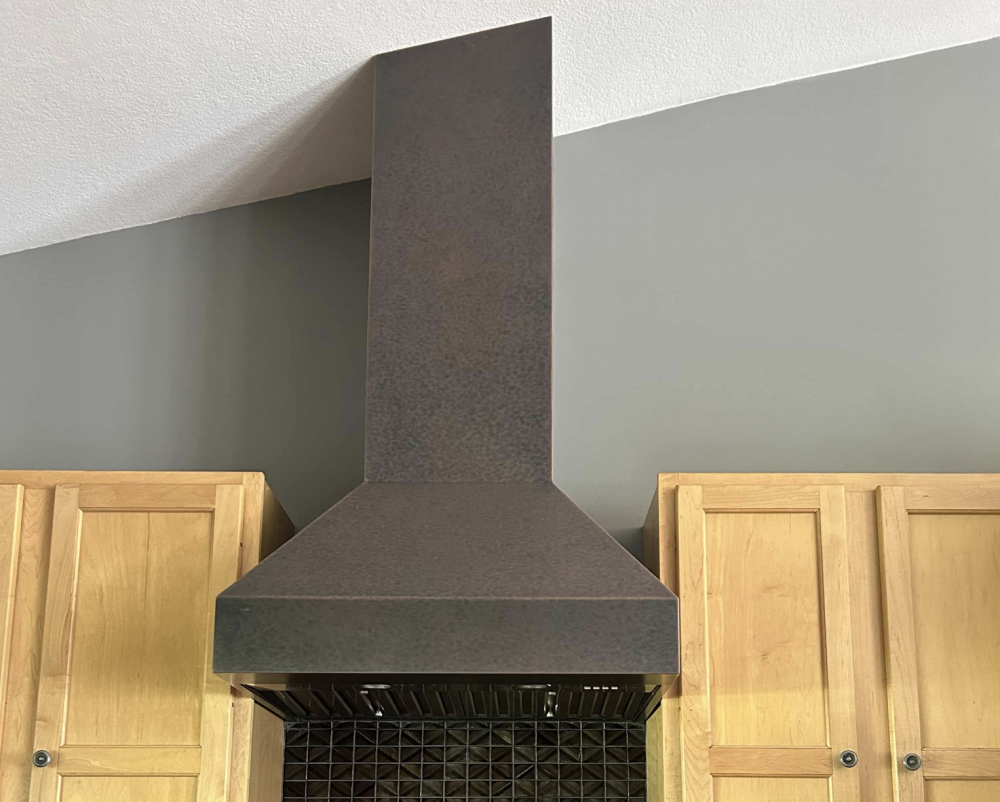
Those in the market for a new kitchen hood can quickly get confused by all the terminology surrounding the product. One of the most common questions people ask during their search is: What is the difference between range hood and vent hood?
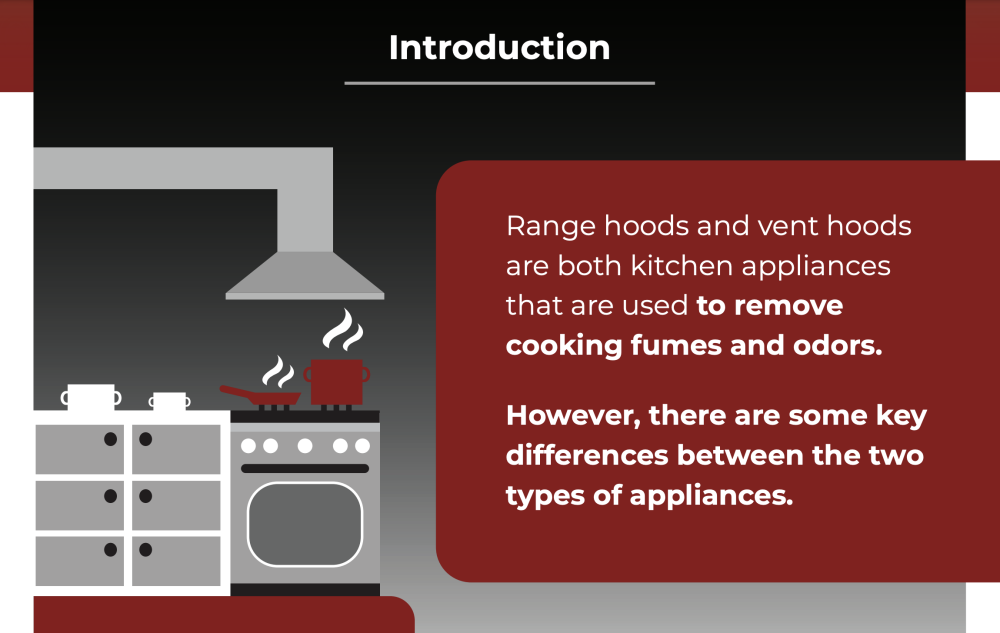
While the two terms seem interchangeable, some key differences can affect your decision when purchasing the right kitchen appliance.
Below, we’ll explore the similarities and differences between range hoods and vent hoods, so you can make the best decision and find the perfect product for your kitchen.
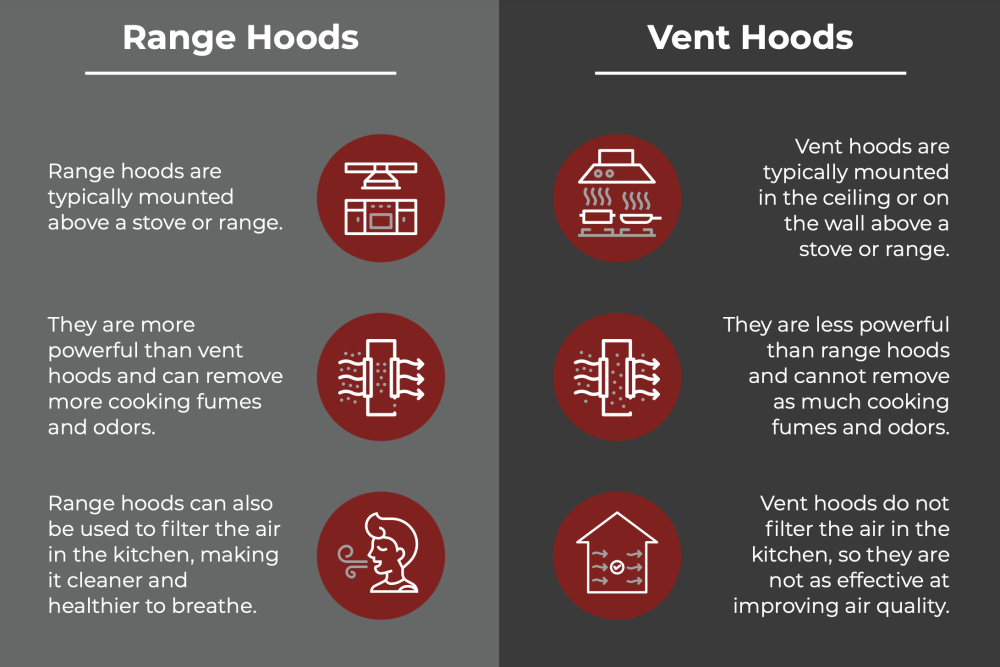
What Is a Range Hood?
A range hood, or a cooker hood or exhaust hood, is a kitchen appliance installed above the cooktop or range to remove excess steam, smoke, and other airborne particles you generate during cooking.
The range hood works by drawing in the polluted air and venting it outside or filtering it through a series of charcoal or other filters before recirculating the cleaned air back into the kitchen.
Range hoods come in multiple sizes and styles to fit various kitchen designs and cooking needs. Some are mounted on the wall above the range, while others are installed underneath the cabinetry.
The great thing about range hoods is that you can efficiently operate them with a switch, button, or remote control. Additionally, some models have smart-style sensors that automatically turn on the fan when they detect high levels of heat or smoke.
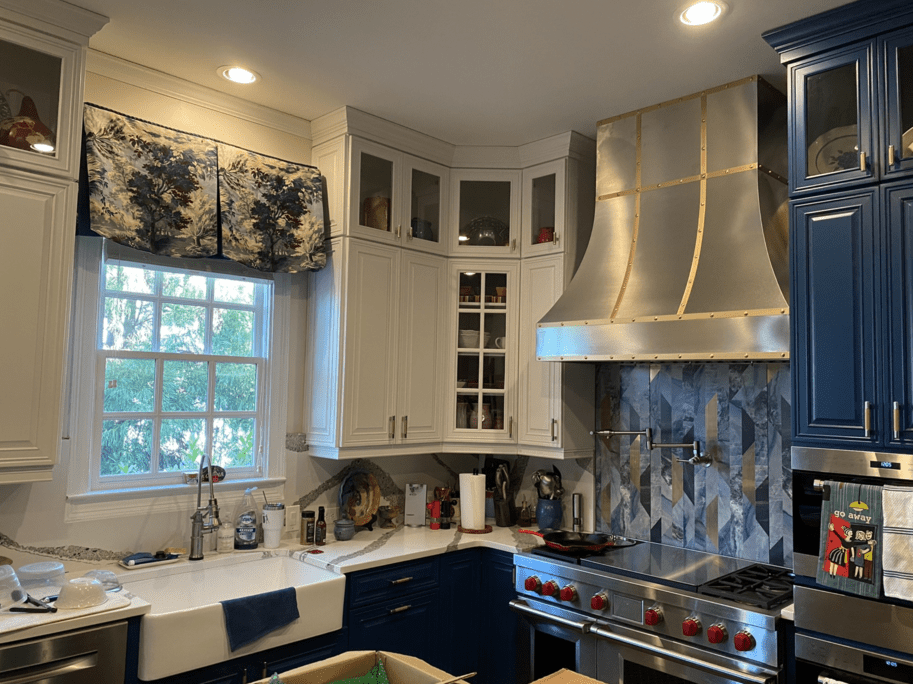 How Does a Range Hood Work?
How Does a Range Hood Work?
Many people find themselves perplexed as to how a range hood works as it does.
For reference, a range hood, not an unvented hood, works by drawing in the smoke, steam, and other airborne particles produced during cooking and expelling them outside or filtering them before recirculating the cleaned air back into the kitchen.
The range hood accomplishes this by using an internal fan to suck in the polluted and dirty air and then directing it through filters that trap the contaminants from the air. The cleaned air is then vented outside through a duct or recirculated back into the kitchen.
To achieve this, there are two main types of range hoods: ducted and ductless.
Ducted vs. Ductless Range Hoods
Regarding ducted and ductless range hoods, several differences and a few similarities come with the two. Primarily, they differ in how they vent and filter the polluted air generated during cooking.
However, below, we highlight more details that separate the two.
Ducted Range Hoods
Ducted range hoods connect to a duct system that vents the polluted air outside instead of recirculating it inside. These hoods are more effective at removing pollutants and odors from the kitchen than ductless range hoods.
Pros:
- Ducted hoods are more efficient at removing pollutants and unnecessary odors from your kitchen.
- These hoods can handle higher cooking volumes and heat levels.
- This style will require less frequent filter replacements.
- A ducted range hood is better for overall indoor air quality.
Cons:
- A ducted range hood is considerably more expensive to install, requiring ductwork and exterior venting.
- They need more maintenance than their counterpart to keep the ducts clean and clear.
- This style is also more challenging to install in existing kitchens.
Ductless Range Hoods
Ductless range hoods work to filter the polluted air in the room and recirculate it as clean air back into the kitchen. These hoods are easier to install and do not require ductwork or exterior venting.
Pros:
- A ductless range hood is easier to install and less expensive to install.
- It can be installed in any kitchen, irrespective of its layout.
- It’s good for removing smoke and steam in a kitchen.
Cons:
- This type of range hood is less effective at removing pollutants and odors.
- Ductless styles often require frequent filter replacements.
- These hoods are typically not recommended for high-volume or high-heat cooking.
What Are the Types of Ventilation Hoods?
The nice thing about ventilation hoods is that they come in various styles. Therefore, choosing a product that matches your need and interior design will be simple due to all the available options.
Wall-Mounted Hoods
Wall-mounted or chimney hoods are attached to the wall above the cooktop. These types of hoods are available in both ducted and ductless options, and they come in various sizes and finishes.
Wall-mounted hoods are an excellent option for kitchens with a range against a wall. They install flush to the wall and provide appropriate ventilation levels throughout the room.
Under-Cabinet Hoods
Under-cabinet hoods are true to their name, as homeowners and landlords can install them beneath a cabinet above the cooktop. These hoods are more discreet and blend in with the cabinetry instead of sticking out.
If you choose to go with an under-cabinet hood, it’s necessary to note that they are also available in both ducted and ductless options. Many find that this style is ideal for kitchens with limited space.
Island Hoods
Island hoods have a unique design that allows them to install above a cooktop with a location on an island in the center of the kitchen. Island range hoods are typically larger and more powerful than other types of hoods and will mount to the ceiling instead of a wall or cabinet.
Like the options above, island hoods are available in both ducted and ductless. These appliances are a great choice for those with island ranges as they allow for adequate ventilation even with the unique placement.
Insert Hoods
Insert hoods, also called liner hoods or custom range hoods, are frequently installed inside a custom-made enclosure, such as a cabinet or hood shell. They are often used for homeowners who want a customized look or have unique cabinetry designs.
An insert hood is readily available in ducted and ductless options like those above. This style is worth exploring if you want to take a different approach to a necessary appliance accessory.
Downdraft Hoods
You will frequently see downdraft hoods installed behind the cooktop as they work by drawing smoke and fumes down and out of the kitchen space through a duct system.
While they are less common than others on the list, they are ideal for homeowners who do not want a traditional overhead hood or for those with a cooktop installed on an island that wants a different option than an island hood.
Pro-Style Hoods
Pro-style hoods are for high-volume cooking; you'll most commonly find them in commercial kitchens instead of residential ones. These hoods are typically bigger and more powerful than other types and have a professional look and feel.
You can purchase these hoods in ducted and ductless options. Additionally, you can select from multiple finishes and styles.
What Should I Consider When Buying a Ventilation Hood?
Unfortunately, choosing a ventilation hood for your home or business isn’t as easy as going to the store and picking one out. There are many different aspects that you need to consider before selecting a hood, including those we list below.
Power
Before purchasing, it’s vital to consider the size and power of the vent hood you need for your cooking needs. The hood you choose should have a fan that is powerful enough to draw out smoke and odors efficiently but not so powerful that it creates a lot of noise.
As you research, look for the hood's cubic feet per minute (CFM) rating, which measures how much air it can move. The higher the CFM rating, the more powerful the hood will be.
Size
In addition to the power level, ensuring the hood is the right size for your cooktop or range is critical. When looking at the different models, know that the hood should be at least as broad as the cooking surface and, ideally, a little broader.
For those with a more oversized cooktop or range, it’s essential to consider a larger hood with a higher CFM rating for your kitchen space to have adequate ventilation.
Venting
When you are getting ready to purchase a vent hood, the concept of venting is at the forefront of your mind. To help you make this decision, consider whether you want a ducted or ductless hood.
As we explained above, there are main differences between ducted and ductless. Different ventilation levels occur with each, so choose wisely.
Lighting
People often forget to look for a hood with built-in lighting to help illuminate your cooktop. This is especially important if your cooktop is in a dimly lit kitchen area, as it allows for better sight and safety.
In your search, you will likely see that some hoods have LED lights, which are energy-efficient and long-lasting. These lights may be a great way to brighten up the space.
Noise
As we briefly mentioned, with power, it’s essential also to consider the noise level of the hood's fan. Some hoods can become quite loud when in operation. To avoid this, look for hoods with low sone ratings indicating a quieter fan.
Another option is to consider a hood with multiple fan speeds, so you can choose a lower speed for quieter operation as the situation calls for it.
Frequently Asked Questions
Knowing the difference between the range hood and the vent hood can be tricky for those unfamiliar with the products available. Below are some common questions about the topic.
What is the difference between a vented and a non-vented range hood?
A vented range hood expels smoke and cooking odors outside through a duct system, while a non-vented range hood filters the air and recirculates it back into the kitchen.
Vented hoods are more efficient at removing pollutants and moisture, while non-vented hoods are easier to install and more cost-effective.
Is a range hood or vent required?
In some jurisdictions, a range hood or vent is required by building codes when installing a gas stove or cooktop.
This is because gas stoves produce harmful pollutants such as carbon monoxide and nitrogen dioxide, which need to vent outside to prevent them from building up in the home.
Even if not required by building codes, installing a range hood or vent can improve indoor air quality and help keep the kitchen range hood region clean and free of smoke, steam, and cooking odors.
Final Thoughts
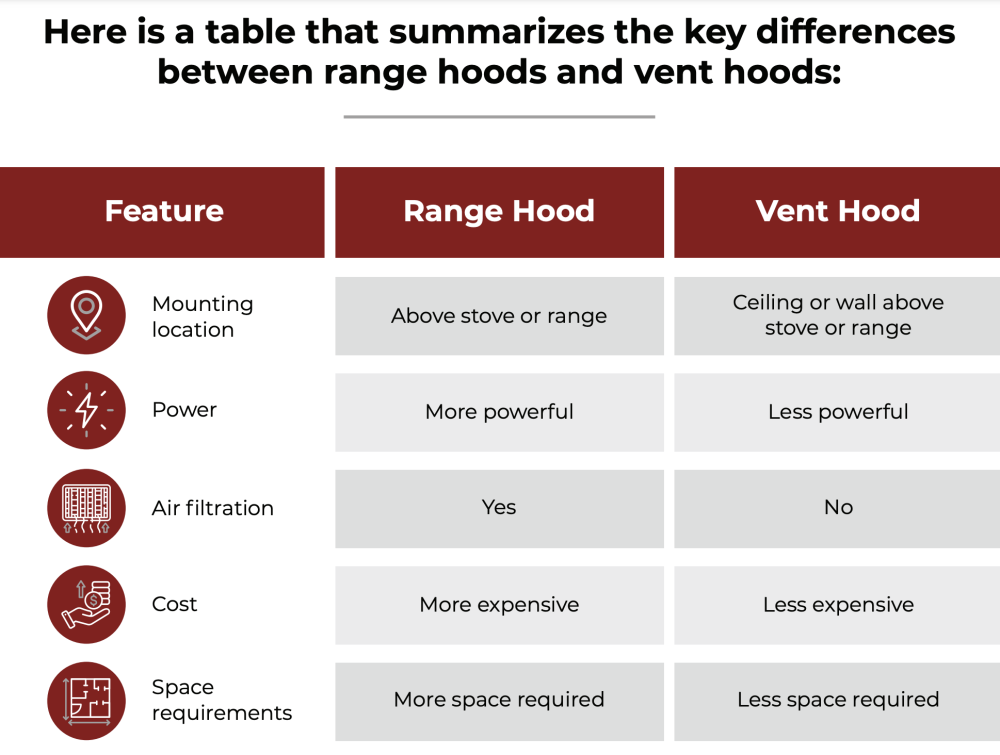
There are key differences that come with a range and vent hood. The first step is to know which works optimally for your home and kitchen, whether ducted or ductless, wall-mounted or island.
However, there are many other elements to consider before installation, such as the power or size of the hood. Ultimately, choose what you think works best for you and your kitchen. Get the custom center piece for your kitchen, get a kitchen ventilation hood today!
